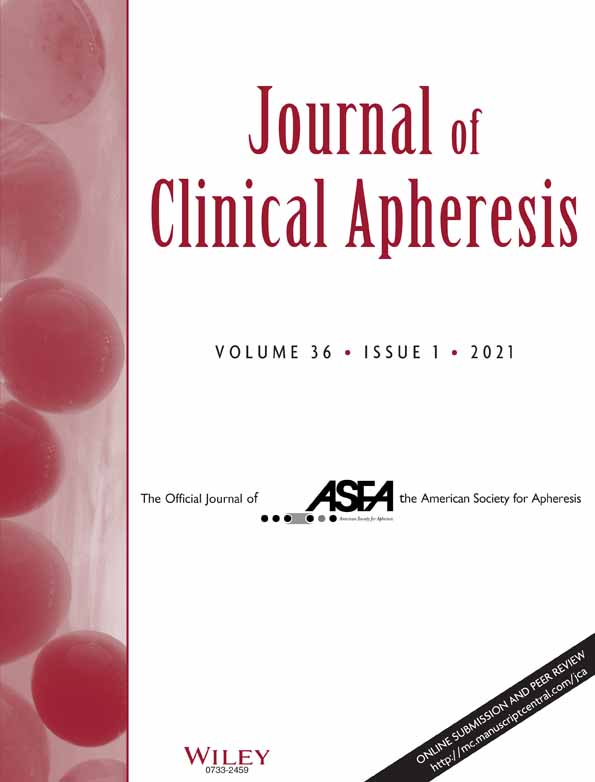Parasite burden and red blood cell exchange transfusion for babesiosis
Funding information: CTSA Grant from the National Center for Advancing Translational Science (NCATS), Grant/Award Number: UL1 TR001863; Gordon and Llura Gund Foundation
Abstract
Background
The association between parasite burden and end-organ dysfunction in subjects with Babesia microti infection has not been extensively studied, nor has the optimal role of red blood cell exchange (RCE) transfusion in babesiosis treatment. This retrospective chart review evaluates the associations between parasitemia, end-organ dysfunction, and outcomes in babesiosis patients treated with antimicrobial agents and RCE compared to those treated with antimicrobial agents alone.
Materials and Methods
We evaluated adults (≥18 years of age) with laboratory-confirmed babesiosis who were admitted between 2011 and 2017 to Yale New Haven Hospital, located in a Babesia-endemic region of the Northeastern United States. Patient demographics, parasitemia levels, clinical and laboratory indicators of end-organ dysfunction, and outcomes were examined.
Results
Ninety-one subjects (mean age 65.1 years, 69.2% male) were studied. Subjects were stratified according to peak parasitemia: <1% (n = 34), 1-5% (n = 24), 5-10% (n = 15), and >10% (n = 18). Laboratory measures indicating degrees of hemolysis, coagulopathy, and pulmonary, renal and hepatic dysfunction differed significantly across peak parasitemia levels. Median length of hospital stay increased with each successive peak parasitemia level (P < .001). These results indicate a strong association between peak parasitemia level and disease severity. Nineteen subjects underwent RCE, all with peak parasitemia ≥9% and some degree of end-organ dysfunction.
Conclusions
Babesia microti parasitemia is closely associated with disease severity, though not all subjects with end-organ dysfunction had high-grade parasitemia. Our data suggest that the use of parasitemia >10%, coupled with clinical status, is a reasonable indicator for RCE in babesiosis patients.
CONFLICT OF INTEREST
The authors declare no conflict of interest.
Open Research
DATA AVAILABILITY STATEMENT
The data that support the findings of this study are available on request from the corresponding author. The data are not publicly available due to privacy or ethical restrictions.




